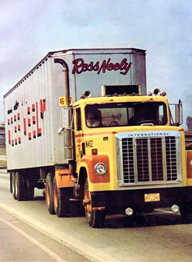HISTORY

In the Words of Ross Neely
Founder
There wasn’t really a big secret to building this company to what it is today. I just tried to outwork everyone else. When they quit at 6, I’d drive until 10. When they didn’t want to work on weekends, I got up on Saturday. It was really about hard work. And some luck. I tell you … I just feel blessed.
Our History
In 1958, Ross Neely, Jr., bought a 1947 1.5-ton International Harvester for $240 and drove it between Birmingham and Gadsden. That daily trek would soon grow into one of the area’s largest transportation companies that still bears his name and trademark slogan, “Breathe freely … ship Ross Neely”. Within just a few months, Ross hired his first full-time driver and began expanding the service footprint to include other areas of the state. By the 1970s, Ross Neely Systems operated more than 1,200 pieces of equipment and employed close to 700 people as the company grew to service 26 terminals across the state of Alabama as well as in Atlanta, Georgia and Beaumont, Texas. Both LTL and truckload services were offered during this time. Van, tank and flatbed divisions also flourished during this significant period of growth.
The Next Chapter in Transportation
During the 1980’s, deregulation had a dramatic impact on the transportation industry. As interstate trucking companies were able to service LTL markets in the state, Ross Neely began a methodical effort to contract the size of the business – eventually leading to the sell of Ross Neely’s intrastate LTL and tank authority. These streamlined changes were instituted over several years in the late 80’s, allowing Ross Neely to focus more on truckload freight only. Currently, Ross Neely operates three terminals across the state of Alabama with a fleet of nearly 40 trucks and over 100 trailers. Ross Neely employs over 40 drivers across the area, the great majority of which spend their weekends home with family. A family-owned business for over 60 years, Ross Neely enjoys one of the lowest driver turnover rates in the United States.





